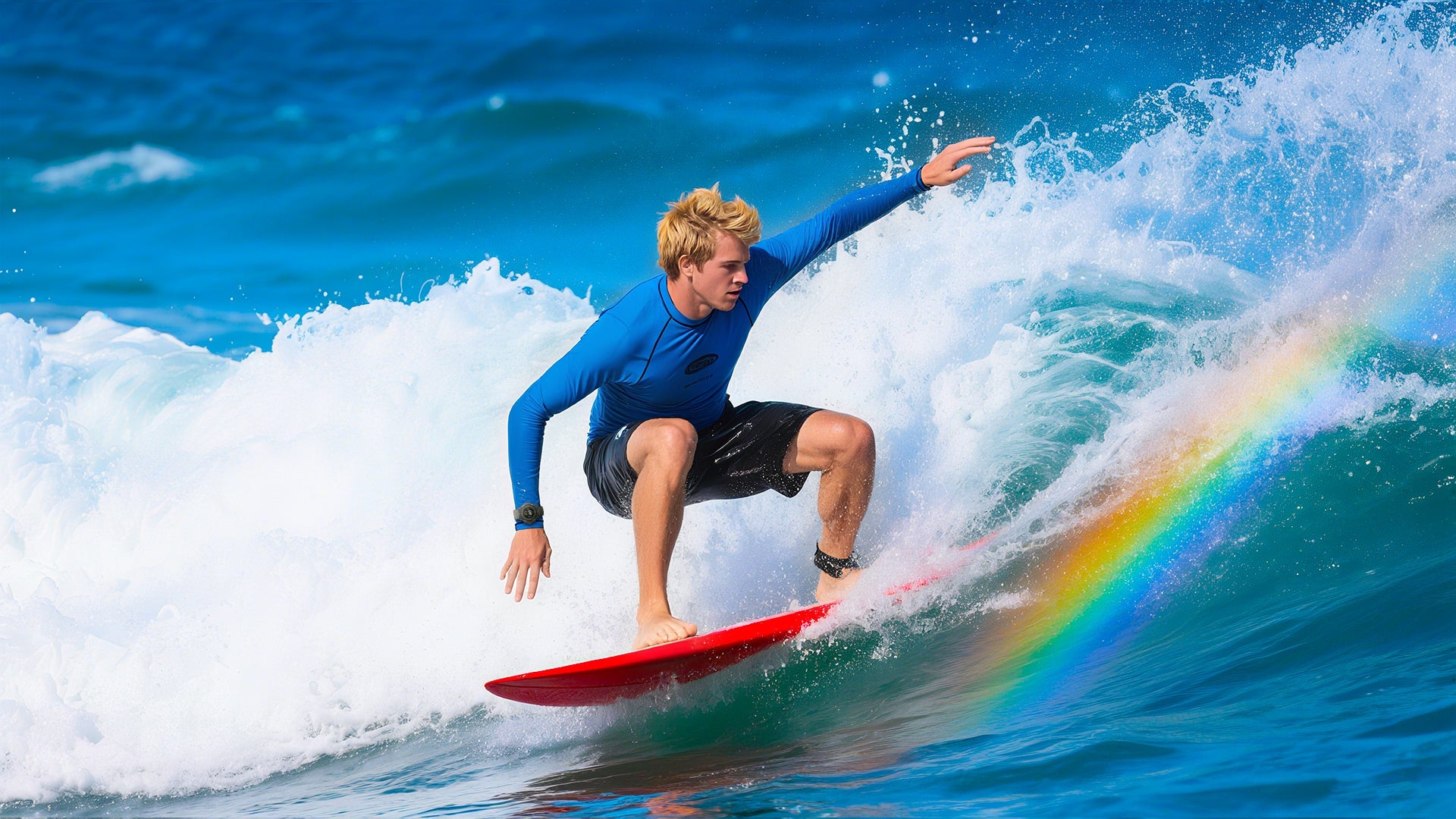

Published by AuraFit.ai
Smartwatches are no longer just gadgets—they’re lifestyle companions. Whether you’re swimming, running, or simply washing your hands, having a waterproof smartwatch ensures your device stays protected while keeping track of your health and activities. But with so many choices, how do you know which one is right for you?
This guide will walk you through how to identify waterproof smartwatches, key buying factors, and why the AuraFit Trek 1 stands out as one of the best waterproof smartwatches in 2024.
When buying a smartwatch, you’ll often see ratings like water-resistant, waterproof, ATM, or IP rating. Here’s what they mean:
Water-Resistant: Can handle splashes, sweat, or light rain, but not swimming.
Waterproof (with rating):
5ATM: Safe for swimming in pools and shallow water.
10ATM: Suitable for snorkeling and water sports.
IP68: Dustproof and water-resistant (usually up to 1.5m for 30 minutes).
👉 Always check the official specifications. A watch that’s only “resistant” isn’t necessarily suitable for swimming.
Factors To Consider When Buying a Waterproof Smartwatch
1. Water Resistance Rating
Match the rating with your lifestyle—are you a swimmer, diver, or casual wearer?
2. Health & Fitness Features
Look for smartwatches with advanced metrics: heart rate, SpO₂, stress tracking, sleep stages, and workout modes.
3. Comfort & Style
Since you’ll wear it daily, choose a lightweight design with adjustable straps that fit both workouts and social occasions.
4. Battery Life
Nothing’s worse than a dead watch mid-adventure. Aim for at least 7–10 days of battery life.
5. Smart Functions
Notifications, GPS, music control, and phone compatibility make your smartwatch more than just a fitness tracker.
Best Waterproof Smartwatches 2024 – AuraFit Trek 1
At AuraFit.ai, we’ve designed the AuraFit Trek 1 to be the ultimate lifestyle smartwatch—built for durability, health, and style.
Waterproof Rating: 5ATM – swim, shower, and enjoy water workouts worry-free.
Comprehensive Tracking: Heart rate, SpO₂, sleep, stress, steps, and 150+ sport modes including swimming.
Long Battery Life: Up to 10 days on one charge.
Lightweight & Stylish: Comfortable design with multiple finishes, from sleek black to elegant gold.
Smart Features: Notifications, GPS tracking, music control, and cross-platform compatibility (iOS & Android).
✨ The AuraFit Trek 1 is perfect for fitness lovers, busy professionals, and anyone who needs a reliable waterproof smartwatch for both workouts and everyday wear.
👉 Shop AuraFit Trek 1 Now at AuraFit.ai
FAQs About Waterproof Smartwatches
Q1: Can I swim with the AuraFit Trek 1?
Yes! The Trek 1 is rated 5ATM, making it safe for swimming and daily water exposure.
Q2: What’s the difference between 5ATM and IP68?
5ATM measures depth resistance (up to 50m water pressure), while IP68 means dustproof and resistant to shallow immersion.
Q3: Does a waterproof smartwatch need maintenance?
Rinse after swimming in saltwater or chlorine pools and avoid pressing buttons underwater for longevity.
Q4: How long does the AuraFit Trek 1 battery last?
Up to 10 days on typical use, so you can focus more on your activities and less on charging.
✅ Resumidamente:
A classificação IP68 é um código de proteção de entrada padronizado definido pela Comissão Eletrotécnica Internacional (IEC). Veja o que significa:
No entanto, observe que o IP68 é testado em condições de laboratório usando água parada e fresca. Fatores do mundo real, como pressão da água, movimento, temperatura e contaminantes (e.g., sal ou sabão) podem afetar o desempenho. Por exemplo:
Embora o IP68 seja robusto, ele pode não cobrir todos os cenários extremos:
Com base em suas necessidades:
IP68 é suficiente para caminhadas e chuva forte, pois protege contra poeira, chuva e submersão acidental. No entanto, se suas atividades incluem natação, mergulho ou exposição à água de alta pressão, opte por um relógio com Classificação de 5 ATM ou superior. Sempre verifique as instruções do fabricante para garantir a longevidade.
✅ Regra prática:
Um smartwatch robusto deve durar confortavelmente pelo menos 1–2 semanas por carga em uso normal, e vários dias no modo GPS. Qualquer coisa menos que isso e ele estará mais próximo de um smartwatch “normal” disfarçado.
👉 Se você usá-lo com um terno, um smartwatch comum ou híbrido pode parecer mais elegante. Mas para estilos casuais/esportivos, relógios robustos são cada vez mais versáteis.
👉 A maioria dos smartwatches robustos agora são confortáveis o suficiente para uso diário, mas se você tem um pulso menor, pode notar o volume em comparação a um smartwatch fino e comum.
Compartilhar:
Best Running Smartwatches for Women Athletes
Rugged Smart Watch for Every Adventure – The Ultimate 2024 Guide